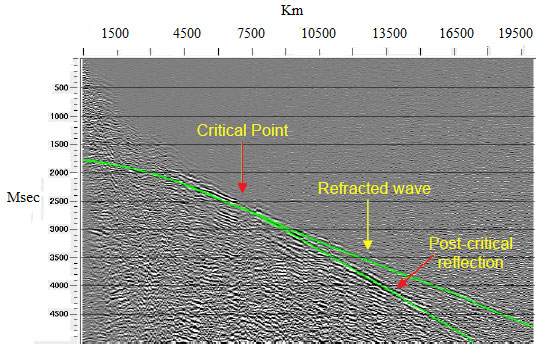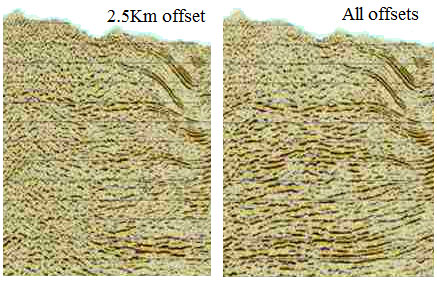Wide Angle Seismic
The imaging of over thrust tectonics, sub-salt, basalt flows and in general in all the cases where the target is located beneath acoustic barriers causing poor seismic response at conventional offsets, can also be improved by using data recorded at long offsets (if the background seismicity is low and does not permit the PST methodology). Travel times and amplitudes of wide angle refraction and reflections allow the construction of better velocity models. The high near-critical amplitudes of wide angle seismic data and the absence of low velocity multiples can be exploited by pre-stack migration of selected portions of the wide angle wavefield.

Wide aperture seismic uses the energy reflected beyond the critical angle that is lost with conventional seismic. Velocity analysis from 2D and 3D tomographic inversion is then used as the input to pre-stack depth migration of wide angle reflections over the whole offset range. Post-critical reflected events are in many cases the only signals visible in complex thrust belts where near offset events are completely obscured by various types of noise.

By deploying an extremely sensitive 24-bit seismograph array LandTech can record superb datasets al over super-long arrays and illuminate features unobserved by classical seismic reflection methods.